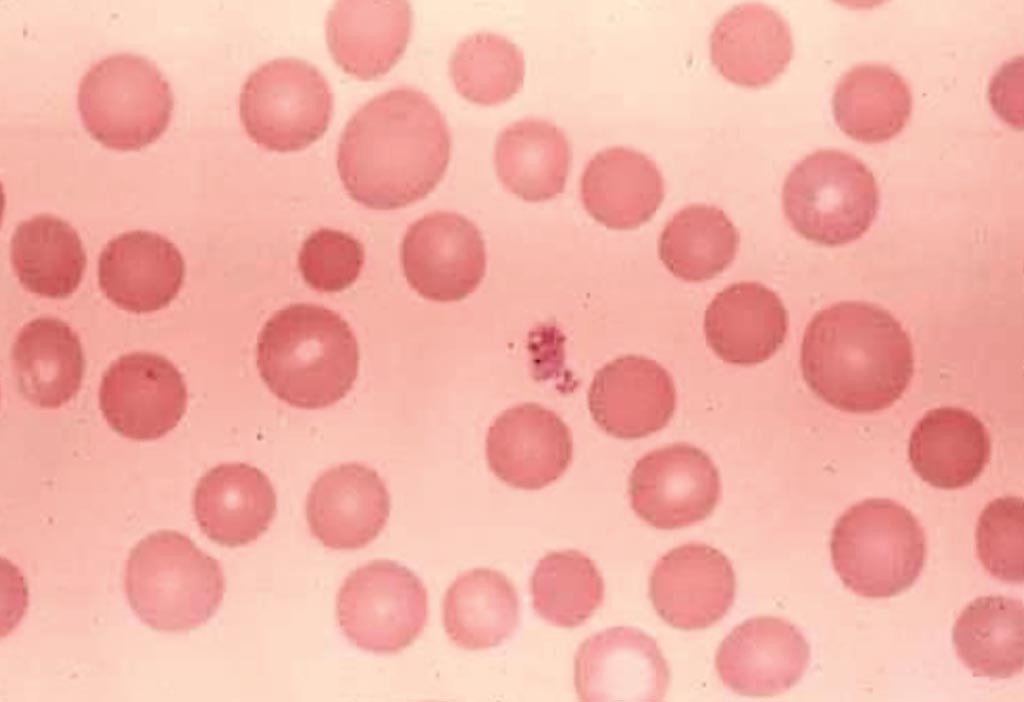Hematological Parameters Predict Severity of Acute Pancreatitis
By LabMedica International staff writers
Posted on 24 Jul 2018
Acute pancreatitis (AP) is an acute inflammation of the pancreatic parenchyma induced by activated pancreatic enzymes due to multiple causes. Current severity scores include multiple variables and some of them are only complete within 48 hours of admission.Posted on 24 Jul 2018
Until now, no single serum marker is able to predict severity or mortality in AP at admission. Red cell distribution width (RDW) is a routine parameter of the complete blood count test, described as simple, easy, inexpensive and quantitative that measures the size heterogeneity of peripheral red blood cell (RBC), known as anisocytosis.

Image: A blood smear shows size heterogeneity of peripheral red blood cells, known as anisocytosis (Photo courtesy of Dr. Jay Park, MD).
Gastroenterologists at the University of Coimbra (Coimbra, Portugal) conducted a retrospective case-control study from January 2014 to December 2016, including a total of 312 consecutive admissions with AP. Ninety-one patients with severe AP were identified during the study period (cases) and were compared with patients with mild AP (controls), in the 1:1 proportion.
Biochemical and arterial blood gas (ABG) tests at admission were also registered, including white blood cells (WBC) count, aspartate aminotransferase (AST), alanine aminotransferase (ALT), total bilirubin, platelet count, blood urea nitrogen (BUN), creatinine, international normalized ratio (INR), albumin, lactate dehydrogenase (LDH), serum glucose, hemoglobin, hematocrit, serum amylase, C-reactive protein at 0 hour (CRP0h), CRP at 24 hours (CRP24h), arterial lactate, arterial partial pressure of oxygen, D-dimers, total serum calcium (TSC), RDW at 0 hour (RDW0h), RDW at 24 hour (RDW24h). Additionally, RDW0h-to-TSC ratio and RDW0h-to-platelets ratio were evaluated.
The team found that there was a significant association of severe AP with high BUN (26.6 ± 17.1 versus 19.4 ± 8.8); serum glucose (168.0 ± 72.6 versus 130.9 ± 35.5); RDW0h (14.6 ± 1.3 versus 12.7 ± 0.5); RDW24h (14.3 ± 1.9 versus 12.8 ± 0.5); and RDW0h-to-TSC ratio (1.8 ± 0.4 versus 1.3 ± 0.1). The overall mortality rate was 8.8% (16/182), all cases associated with severe AP, corresponding to a mortality rate of 17.6% (16/91) in the severe AP group. Relatively to mortality in AP and as verified for AP severity, RDW at 0 hours and 24 hours post-admission were the best predictors for mortality in AP, followed by RDW0h-to-TSC ratio.
The authors concluded that RDW is a simple routine parameter, available at admission. The AP cohort showed that RDW0h of greater than 13.0 and RDW0h-to-total serum calcium ratio greater than 1.4 were excellent predictors for severity and RDW0h greater than 14.0 and RDW0h-to-total serum calcium ratio of greater than 1.7 were very-good predictors for mortality, being superior to conventional prognostic scoring systems. The study was published on July 5, 2018, in the journal BMC Gastroenterology.
Related Links:
University of Coimbra














